Features
Ch-ch-ch-changes
David Bowie Albums Ranked Worst To Best
by Benjamin Ray
Monday morning, Jan. 11, 2016, the music world woke up to the shocking news that David Bowie had died from cancer. We all looked for the hoax, the Onion logo, something to assure us that it wasn't true, but a tweet from son Duncan Jones made it official, and within hours Rolling Stone and CNN had confirmed it. It was shocking, confusing, sad, and all the more so because Bowie had released his newest album Blackstar two days prior.
It is a dark, difficult, forward-thinking, artistic, electro-pop-jazz album that encapsulates all that is right (and sometimes wrong) with Mr. Bowie, and it is the final word in his lengthy, legendary discography. As we collect ourselves and move forward, there is no better way for fans to celebrate the man's life than by listening to his music, and so with that in mind we present a ranking of his influential, arresting, diverse catalog of 25 studio discs.
We all know that Bowie changed styles when the artistic muse struck, which resulted in him creating trends, bettering them or following them from the '60s through 1999, after which he followed a similar template on his next four albums (despite a 10-year retirement). The stage and film actor created indelible characters in his music, for himself (Aladdin, Ziggy, Thin White Duke) and it was anyone's guess which way he would go next. Like a true artist, he always pushed, always reached, always stayed current and true to himself (save for a stint in the mid-80s, where commercial concerns ruled over artistic ones). His cool as hell persona and outsider status endeared him to many and the best of his songs provided the soundtrack to many lives across generations. He will be missed.
Thank you, David Bowie.
25. Black Tie White Noise (1993)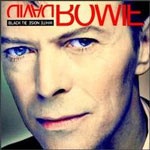
Even the worst of Bowie's experiments were still generally interesting, but this was the capper of a terrible three-record run (five, if you count his releases with Tin Machine). It's not that the songs are bad; they’re just offensively bland, with no real direction save for some vague electronic underpinnings. Although you can't ever completely dismiss a Bowie record, this one is the easiest to forget, and Bowie would quickly get a lot more interesting again throughout the rest of the '90s.
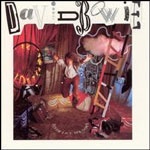 24. Never Let Me Down (1987)
24. Never Let Me Down (1987)
We all know that '80s synth pop in the second half of the decade was generally cheesy, generic, soul-free, and destined to be horribly dated. One feels that Bowie could have made this work somehow, but after Let's Dance, he seemed as lost as everyone else, which was an alarming rarity for a man at the vanguard of contemporary music movements. Bowie later claimed to not remember making much of this record, which is understandable, because you won't remember most of the songs about four minutes after they end.
23. David Bowie (1967)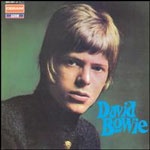
The origin story is best left unearthed. Bowie never fit in with this sort of music, but it was 1967, and he had to do something while he found his voice and songwriting skills.
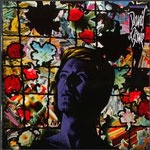 22. Tonight (1984)
22. Tonight (1984)
Let's Dance signaled a new era for Bowie, who came roaring into the '80s pop scene with three catchy, danceable yet still substantial hit singles (four, if you count "Cat People") The sequel, released only a year later, had a similar sound but that's about it. Only "Blue Jean" could be classified as a single; the rest veered from the seven-minute "Loving The Alien" to an underrated Iggy Pop cover ("Neighborhood Threat"). In retrospect, it appears Bowie was attempting to fuse his Let's Dance sound with a more mature, progressive European sound, but it just doesn't work outside of those three songs.
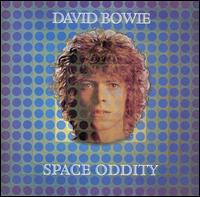 21. Space Oddity (1969)
21. Space Oddity (1969)
One great song does not a great album make. It's a little better than the debut but not by much, although one can hear the seeds being planted of what would quickly blossom into a brilliant career. But since the title track is available anywhere, there's no reason to really revisit this one other than curiosity.
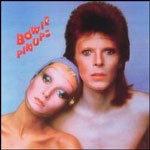 20. Pin-Ups (1973)
20. Pin-Ups (1973)
Offhand, can you name any truly indispensable covers albums? Me neither. They are good ways to stall for time and/or pay tribute to one's musical heroes and contemporaries, and they can be fun for fans, but that's about it. This was the last album recorded with the Spiders From Mars and does kind of a disservice to them, considering the brilliance of the last four albums. Not a bad album, but not a necessary one.
19. Outside (1995)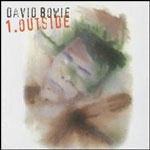
Each of Bowie's '90s albums has a very different sound and feel, which can be interpreted as a) catching up to current trends or b) pursuing whatever musical direction a legendary artist feels like, commercial concerns aside. But one can't argue that these albums are all interesting, even at their worst, except for Black Tie White Noise. To be sure, Outside is bloated, convoluted and confusing. To be sure, it's also ambitious, audacious and features a few pretty darn good songs.
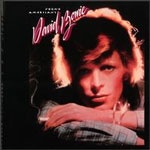 18. Young Americans (1975)
18. Young Americans (1975)
So, in 1975, Bowie decided to briefly dabble in Philly soul; since he was lily white, it was renamed "blue-eyed soul" or "white soul" or, less charitably, "plastic soul." The title track and "Fame" rightly became hits, but they bookend an album of mostly underwritten, forgettable and mundane songs (and a truly awful cover of "Across The Universe"). Any album with appearances by John Lennon and Luther Vandross in the same place is noteworthy, of course, but even Bowie recognized this was a phase and moved on to different things only one year later.
17. Heathen (2002)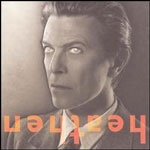
This was touted as a huge return to form, a reuniting with an old producer, blah blah blah, even though only three years had passed since hours... The album was hailed by critics and some fans, but I just never bought into it because it sounded like an artist living up to everyone else's expectations of how he should sound, and it lacked the fire and drive of much of his previous work. On the albums before and after this one, Bowie proved maturity wasn't a dirty word; on this one, he plays it a little safe. There is a melancholy and an emotional undercurrent throughout the songs that give them weight, and in the wake of 9/11 (which cast a shadow over the songwriting, even if many of them were written before that event), the music took on more meaning for some people.
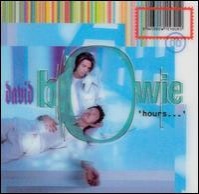 16. Hours... (1999)
16. Hours... (1999)
His final ’90s album shows Bowie fully embracing growing up, ditching current fads for his own comfortable singer/songwriter side. Many of the songs here are acoustic-guitar based, the tempos are a little slower, and an air of wistfulness settles over the album. "The Pretty Things Are Going to Hell" rocks a little bit, and "Thursday's Child" and "Seven" are more introspective but no less arresting.
15. Blackstar (2016)
Bowie's final album strongly recalls Low in its dark, driving, avant-garde artistic compositions. Recorded while Bowie was suffering from cancer - a fact almost nobody knew at the time - it features versions of songs from his 2014 compilation disc, his 2015 off-broadway play Lazarus and a few new tunes. The title cut is an unsettling 10-minute electronic bop with jazz overtones and wailing vocals, unlike anything else in his catalog, while "Sue (In a Season of Crime)" and "'Tis A Pity She Was A Whore" are more fun and accessible even in their stories of unsavory human behavior. The album moves slowly and is difficult to listen to in spots, but its best moments are mesmerizing, arresting and free of any kind of commercial aspirations. It's a hell of a way to say goodbye and proof that the artist and the actor never really fell to Earth but continued reaching and creating and striving for his art his entire life.
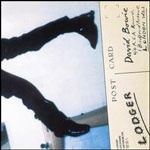
14. Lodger (1979)
The final and weakest album of the Berlin trilogy offered a triptych of decent post-punk singles ("D.J." and "Look Back In Anger" are the best) and little else. What had been revolutionary was now a little tired as the post-punk and alternative movement began to rise based on what Bowie had done on Low. Perhaps sensing that this time in his career was up based on the reaction to the album, Bowie moved on to better things, leaving this as a fairly interesting travelogue and his last album of a decade he had owned.
13. Earthling (1997)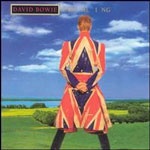
In which Bowie attempted techno beats, jungle music, Nine Inch Nails-inspired electronica and the like. It lasted one album, and it’s not half bad, depending on your mood. "I'm Afraid Of Americans" is a great satirical song and "Little Wonder" introduces the concept with attitude; the rest are lesser efforts in the same vein. Some have said the music is standard Bowie with the electronics grafted on, but there are worse things to be found in his discography.
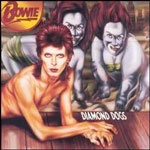 12. Diamond Dogs (1974)
12. Diamond Dogs (1974)
Post-Spiders From Mars, Bowie wasn't quite sure where to go next, so he gathered a new band and attempted another concept album. The plan was to adapt 1984 for a musical, but legal problems prevented that, so Bowie took elements of that and rewrote his own futuristic kind of story. The concept is muddled, the glam-rock leans more on excess and less on melody, and the road clearly had ended on this phase, but its noisy decadence has a certain pre-punk charm. The title track is a fine classic rocker, the indelible "Rebel Rebel" has one of the great rock riffs of the decade and "1984" is a vastly underrated gem, a disco-glam rock pastiche that makes one wonder how good the original concept album would have been.
11. Let's Dance (1983)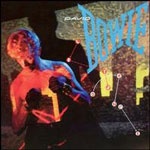
Normally, three songs out of eight is a low return on investment, but when the three are this good, it's perfectly fine. Bowie had taken some time for personal projects before roaring into 1983 with this track and three huge hits among the best of that year...and of New Wave in general. The beauty of "Modern Love," "China Girl" and "Let's Dance" is in how they called back to classic ’50s rock for inspiration, then used melancholy sounds and catchy, unforgettable rhythms (plus some fine singing) to create near-perfect pop songs. At five to eight minutes in length, each one had more substance than any other five songs on the Top 40 at the time...plus, you can't beat a lyric like "Church on time terrifies me." The rest of the album is just along for the ride.
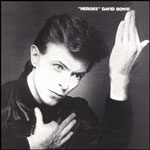 10. Heroes (1977)
10. Heroes (1977)
The stomping "Beauty And The Beast" signifies that this will be a different album than its game-changing predecessor Low, even if it follows a similar template. Bowie was fully immersed in his Berlin phase now, pursuing his muse with Brian Eno and Iggy Pop and angular, dissonant pop bearing little resemblance to his albums even two years prior. Of course, "Heroes" stands tall above not only the rest of the album but of Bowie's entire career: immaculately produced, difficult and lovely, chilly and warm at the same time, it is a triumph.
9. The Next Day (2013)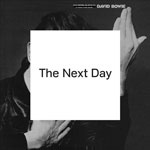
Comeback albums aren't supposed to be this good, are they? After 2003's Reality, heart problems forced David Bowie into an early retirement, and fans pretty much figured that was that. But he completely surprised fans 10 years later with the announcement of a new disc, followed shortly by the actual disc (plus three bonus tracks on iTunes). Even if the release had been mediocre, fans would have loved it, but Bowie channels all of his energy, emotion and many of his musical detours into these songs. For inspiration, he returns to the seminal Heroes, even borrowing the cover art and simply pasting over it. Opener "The Next Day" is almost a note-perfect sequel to "Beauty And The Beast," the opening track to the 1978 album. From this standpoint, Bowie revisits his time in Berlin on the sparse, lovely "Where Are We Now" and rocks with clenched mature fury on "You Will Set the World on Fire" and "The Stars Are Out Tonight."
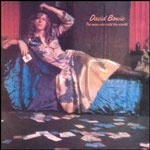 8. The Man Who Sold the World (1970)
8. The Man Who Sold the World (1970)
Realizing he would have more success with a band than alone at this pivotal post-"Space Oddity" point in his career, Bowie hooked up with Mick Ronson and the Spiders From Mars. Their first album yielded no real hits and remained largely unknown (outside of the faithful) until Nirvana popularized the title song for a new generation. But for those in the know, the album is actually a proto-metal tour de force that helped usher in the age of glam rock even more than Ziggy. The band stomps through "Saviour Machine" and the long "Width Of A Circle," which they would turn into a fierce on-stage rocker. Bowie would later refine this sound and these themes, but this remains a fascinating early effort and a pivotal point in his career.
7. Hunky Dory (1971)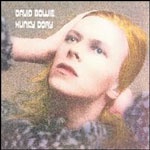
This is sort of the flip side to its predecessor The Man Who Sold The World, emphasizing the folk and singer/songwriter side of Bowie's approach. Both sides would come together on the seminal Ziggy Stardust one year later. However, Hunky Dory is a great album in its own right, touching on adolescent themes like growing up ("Changes,") hero worship ("Andy Warhol," "Song For Bob Dylan"), the nascent glam rock movement ("Life On Mars", "Queen Bitch") and Bowie's own family ("Kooks," "The Bewlay Brothers"). Bowie was rarely this personal or approachable, and if there isn't much here that really rocks, the songs show rapidly improved songwriting and performances from Space Oddity, released only two years prior.
 6. The Rise And Fall Of Ziggy Stardust And The Spiders From Mars (1972)
6. The Rise And Fall Of Ziggy Stardust And The Spiders From Mars (1972)
The big one. This is the one that launched Bowie's career into the big-time and made him a musical and cultural force, especially to those who felt like outsiders from the mainstream and could identify with the Velvet Underground and an alien who came to Earth to save mankind through rock and roll, or something. The loose concept threads the songs together but isn't necessary to enjoying them, and the best moments are career highlights, including the loud pummeling rocker "Suffragette City," the more pensive "Ziggy Stardust," the spaced-out "Moonage Daydream" and the fun "Hang On To Yourself." These tracks are beloved and so critics tend to forget the duller songs like "Five Years," "Star," "Lady Stardust" and the kinda-pretentious "Rock And Roll Suicide," which closes the album on a bum note. Still, this is the go-to record for new Bowie fans, and it's hard to argue with that, even if it's not his best album on a song-by-song basis.
5. Reality (2003)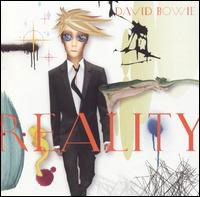
Ranking this one so high will elicit criticism from other critics and maybe fans, no doubt, but they need to go back and rediscover this one. First, it's far more exciting than 2002's Heathen, drawing more from the second phase of Bowie's career than from Hunky Dory. Second, the covers are obscure and well-chosen (the Modern Lovers' "Pablo Picasso" and George Harrison's "Try Some, Buy Some," opener "New Killer Star" and "Fall Dog Bombs The Moon" are fine mid-tempo rockers with subdued political overtones, "Days" is a strong acoustic number and "The Loneliest Guy" is the most overtly melancholy Bowie had been since Station To Station's "Wild Is The Wind." The eight-minute closer "Bring Me The Disco King" is a bit divisive, recalling late-era Steely Dan and a hint of "Rock And Roll Suicide" underneath Bowie's low-register quivering vocals. It's ambitious, a bit unsettling and far too long, and it was the last we'd hear from the man for a decade.
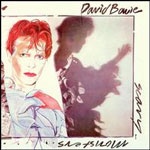 4. Scary Monsters (And Super Creeps) (1980)
4. Scary Monsters (And Super Creeps) (1980)
Every Bowie review from 1983 onward would invariably say "His best since Scary Monsters," because this is probably the last truly great album statement he made. The disc is Bowie's entry into the alternative music scene – a scene he helped inspire, with bands like Talking Heads, who were making this sort of music in 1980 as well – and it touched a nerve with a lot of up and coming bands who would define the decade. The jagged dissonance and screamed vocals of "It's No Game" were massively influential on the Pixies, Sonic Youth and Nirvana; the roots of Surfer Rosa and In Utero are in this song alone. "Ashes To Ashes" is an explicit sequel to "Space Oddity," one in which the thrill of exploration has been replaced by retreat, defeat and drugs, and it's an arresting character study set to warm, enveloping yet downcast music. The songs are edgy, nervy and razor-sharp, with great guitar work from King Crimson's Robert Fripp throughout, taking the best of the Berlin Trilogy and honing it into a modern me-first landscape. The most interesting song from a pop standpoint is "Fashion," a tossed-off, hollow dance number that mocks trends while being catchy enough to start one. Meanwhile, "Teenage Wildlife" relaxes the icy pose of the first half of the record to throw in an old-fashioned Young Americans-style paean to younger fans, of the same age who were affected by Ziggy eight years prior.
3. Low (1977)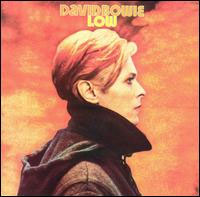
Low is David Bowie's third best album and his most sonically interesting. He had moved back to Europe in body and spirit in 1977 to clean up from his drug addiction and teamed up with Brian Eno and Iggy Pop, beginning to explore a different side of his sound only hinted at on Station To Station. The album is split in half; the first side is seven avant-garde pop songs, three without vocals, and the second side is four brooding, dark instrumentals. None of these songs were hits, as they were just too weird for the mainstream who had just embraced "Golden Years," but "Sound And Vision" and "Be My Wife" represent the pop side of this approach and hold up well. The second side is not an easy listen by any means, showing Eno's approach on the music, but it shows Bowie fascinated by sound, exploring textures, synthesized instruments and music as artistic expression. By no means is Low the first album Bowie fans should hear, but it is one of his best and most influential.
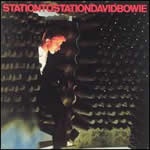 2. Station To Station (1976)
2. Station To Station (1976)
The Berlin trilogy should really be considered a quadrilogy, with this as the starting point. Doing a complete about-face from both glam rock and the plastic soul of Young Americans, Bowie embraced a cold, alien sexiness that was more adult than Ziggy had been. Rolling Stone described the 10-minute, two-part title song as having a "chilly grandeur" and a sound that looked to Bowie's immediate future. But four of the other five songs are classics, loved by Bowie fans and unknown by most others – save for the popping thump of "Golden Years," which predated the rise of disco and remains one of the man's catchiest songs. "TVC15" is a shorter, funnier cousin to "Station To Station," a sci-fi tune that is both detached and electric, while "Stay" is a fuzzy rocker that envelops the listener. The closer "Wild Is The Wind" is at odds with the rest of the disc, a warm, heartbreaking ballad with some of the best actual singing of Bowie's career. For a moment, he drops the Thin White Duke act and the results are surprisingly moving. A touching capper to a fantastic album.
1. Aladdin Sane (1973)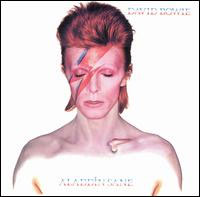
In which it all came together for Mr. Bowie: the songwriting of Hunky Dory, the populist appeal and rock of Ziggy Stardust and a full embracing of glam rock and all the excess it had to offer. Yet although Bowie's name is on the marquee, guitarist Mick Ronson is the star here, burning through the hardest, hookiest riffs of his career in fantastic, decadent rockers like "The Jean Genie," "Cracked Actor," "Panic In Detroit," "Watch That Man" and "The Prettiest Star." That latter song and "Drive-In Saturday" are explicit recalls of doo-wop early rock – this was a few years before Grease and Happy Days made that genre popular again – but they are played straight and with affection. Only a cover of the Stones' "Let's Spend The Night Together" is perfunctory, but it's still fun, while the title track is a lost classic, a piano-based ballad with an off-kilter piano and sax solo and some great bass work that sounds like nothing else in Bowie's catalog, let alone this album... and it's the second song. Simply amazing, and the pinnacle of the first phase of Bowie's career; it would take him four more albums before he got to these heights again.